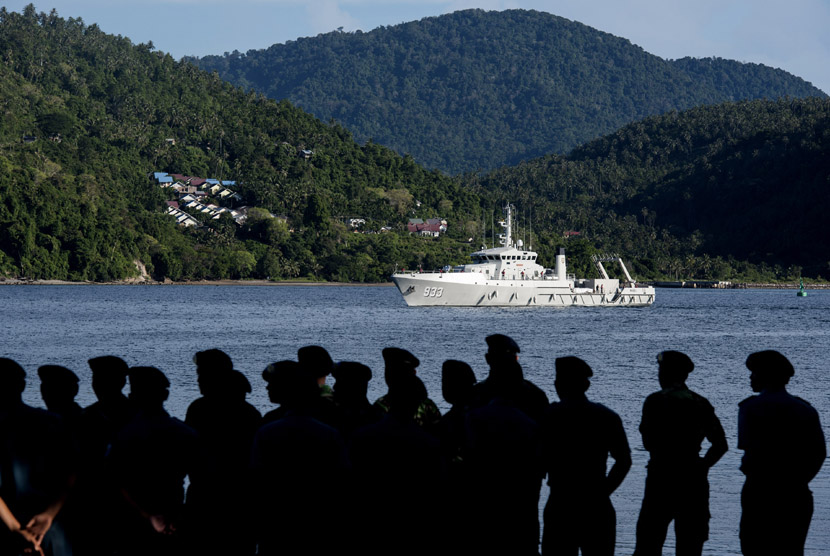REPUBLIKA.CO.ID, JAKARTA -- Indonesian Navy (TNI AL) will sink at least 35 of illegal fishing vessels in a number of Indonesian waters. The operation was a form of cooperation between the Navy, the Ministry of Maritime Affairs and Fisheries (KKP), and Water and Air Police unit.
According to the Head of Department of Information (Kadispen) of Indonesian Navy, First Admiral of Indonesian military (TNI) Manahan Simorangkir, the sinking of illegal fishing vessels planned to be done on Wednesday, May 20, by Navy, to coincide with National Awakening Day. Although scattered in five different locations, the sinking ship will be done simultaneously at 10:00 am.
Manahan explained, from 35 illegal fishing vessels or Foreign Fishing Vessel (KIA) which will be sunk, its location are spread and will be done by Navy Eastern Region Fleet Command (Koarmatim) and Navy Western Region Fleet Command (Koarmabar).
"There are 15 vessels will be drowning in the East, and there are about 20 vessels in the West," said Manahan when contacted by ROL on Tuesday, May 19.
For their locations, Manahan said, 15 KIA will be drowned in the Bitung’s waters, North Sulawesi, 17 vessels in Ranai’s waters, Natuna Islands, one ship in Belawan, Medan, one ship in Lhoksumawe, NAD, and one ship in Tanjung Balai, Asahan, North Sumatra. In the sinking operation, the Navy had already prepared a number of vessels of the Republic of Indonesia (KRI).
"Koarmatim already prepared three KRI, while Koarmabar will prepare six KRI," said Manahan.
Manahan also ensured, captains of the ships will continue the legal process in accordance with the law. Meanwhile, for the crew of the ship (ABK) of these vessels will soon be deported to his home country respectively. Furthermore, Manahan said, the average of illegal fishing ships come from countries in the ASEAN region.
"Some of them came from Vietnam, Thailand, and the Philippines," he said.


